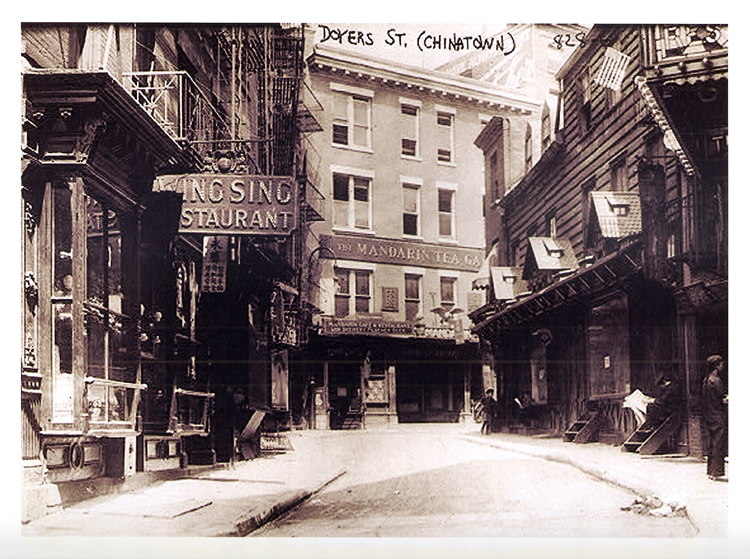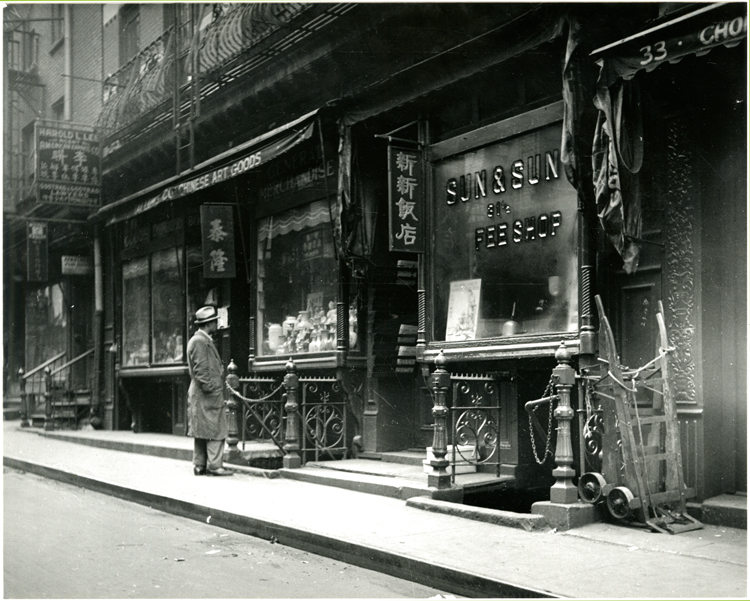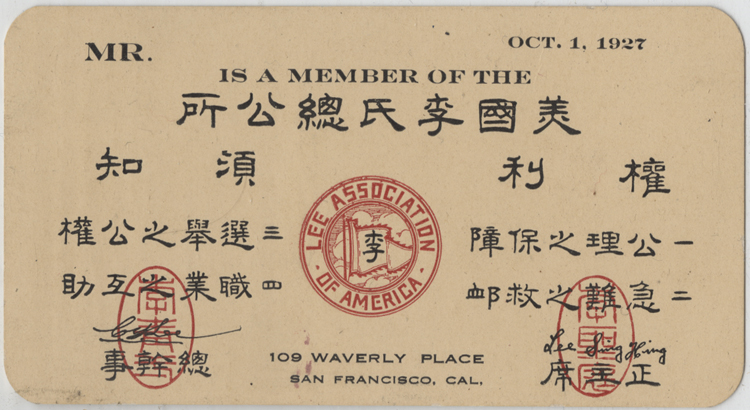Doyers Street, a one block stretch with a sharp bend in the middle, is one of the most historically rich streets in New York City’s Chinatown. Doyers Street was named for 18th-century Dutch immigrant Hendrik Doyer, who owned a distillery and tavern in 1791 where the street meets Bowery. It later became part of the very core of Chinatown, acting as the site for the first Chinese language theater in New York City from 1893-1911. In the early 1900s, the street earned the nickname “the Bloody Angle,” as warring tongs would hide behind the sharp bend of the street to attack their opponents as they turned the corner. In 1905, a particularly infamous and bloody attack occurred when the Hip Sing Tong targeted On Leong Tong members taking in an opera at the street’s theater. In the middle of the show, a Hip Sing Tong threw a string of lit firecrackers onto the stage before four more gunmen opened fire into the crowd of four hundred people. Four On Leong Tong died, as well as two civilians. But such violence waned over the years. Today, Doyers is a peaceful pedestrian only street and more famous as the home of Nam Wah Tea Parlor, which has been serving baked goods and more recently dim sum since 1920. It has also served as a filming location for Justin Timberlake’s “Take Back the Night” music video, and more recently the film John Wick Chapter 3: Parabellum.
Collections馆藏Collections馆藏Collections馆藏Collections馆藏Collections馆藏Collections馆藏Collections馆藏Collections馆藏Collections馆藏Collections馆藏Collections馆藏Collections馆藏Collections馆藏Collections馆藏Collections馆藏Collections馆藏Collections馆藏Collections馆藏Collections馆藏Collections馆藏Collections馆藏Collections馆藏Collections馆藏Collections馆藏Collections馆藏Collections馆藏Collections馆藏Collections馆藏Collections馆藏Collections馆藏Collections馆藏Collections馆藏Collections馆藏Collections馆藏Collections馆藏Collections馆藏Collections馆藏Collections馆藏Collections馆藏Collections馆藏Collections馆藏Collections馆藏Collections馆藏Collections馆藏Collections馆藏Collections馆藏Collections馆藏Collections馆藏Collections馆藏Collections馆藏Collections馆藏Collections馆藏Collections馆藏Collections馆藏Collections馆藏Collections馆藏Collections馆藏Collections馆藏Collections馆藏Collections馆藏Collections馆藏Collections馆藏Collections馆藏Collections馆藏
Doyers Street

09 September 2019 Posted.
Street view of Doyers Street, Chinatown, Courtesy of Eric Y. Ng, Museum of Chinese in America (MOCA) collection.
唐人街宰也街景,Eric Y. Ng捐赠,美国华人博物馆(MOCA)馆藏

